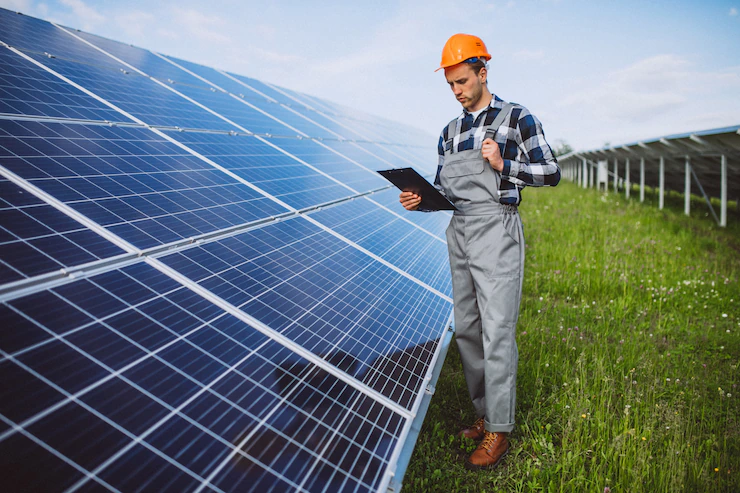Building a Solar Ready Home
When building a new home, you have the opportunity to build it right from the beginning, saving yourself thousands of dollars in utility bills over the decades (as well as offsetting the associated fossil fuel emissions). Austin Home Developers are built the right way. Smart, energy efficient, sustainable, net-zero solar-powered homes that offer an array of healthy, green features for our customers in central Texas. We also provide solar installation services for existing and new-build homes throughout Texas. In doing so, we work with other builders throughout Texas to make sure the homes they build for their customers are solar ready for immediate or future solar PV installations.
New construction does not need to be expensive to be sensible. The cost to improve a building’s performance are quickly recouped by monthly energy savings. Generally, high efficiency new homes like Austin Home Developers consist of the following properties:
- Well insulated building envelope that provides comfortable surroundings in all seasons
- High-efficiency appliances that minimize energy usage.
- Renewable energy systems offset the energy you do need. A properly designed solar array and an all-electric house mean freedom from utility bill uncertainty, forever.
- Well insulated building envelope that provides comfortable surroundings in all seasons
- High-efficiency appliances that minimize energy usage.
- Renewable energy systems offset the energy you do need. A properly designed solar array and an all-electric house mean freedom from utility bill uncertainty, forever.
Because Austin Home Developers incorporate photovoltaic (PV) systems, we utilize several design criteria that enable seamless integration of solar into the home. Builders and/or their customers considering adding PV systems to new houses can save time and money by following some simple solar ready design guidelines. These design guidelines are straightforward and impact house design. Early consideration of the list below will minimize the cost of immediate or future integration of photovoltaic systems. This information is intended as a guide in cases where the PV system design has not been determined. In cases where the design of the future PV system is already known, some of these recommendations can be changed to more specifically and effectively accommodate the system installation. For example, when the type and model of PV modules are known, specific direct current (dc) wiring and disconnects can be sized and installed in advance.
The primary Solar Ready Home factors to consider when installing solar for a new home:
- South, southwest, or west-facing roof Probably the most important attribute for new construction is that a home be built with adequate orientation to the sun. While south facing roofs are best for collecting the most annual sunlight, some Texas utilities are sending market signals to incentivize west facing roofs that capture energy when it is most expensive on the grid (late summer afternoons). Ideal roof pitch for our typical energy loads is between 2/12 and 6/12.
- Shade-free site The south-facing roof space should be located in a shade-free area of the site. Ideally there will be a clear solar window from 8am-5pm, year round, to maximize solar performance.
- Strategic placement of rooftop obstructions Roof features such as vent pipes, chimneys, and other roof mounted utilities interrupt the roof-span and make it more difficult to install solar arrays. Any roof features should be north of where the solar array will be placed.
- Avoid dormers It is best if the south-facing roof does not have dormers. A larger contiguous roof space allows for the most cost efficient solar installation.
- Standing seam metal roofs Besides providing a long lasting radiant barrier, these roofs are ideal when installing a solar system. The standing seams provide a penetration-less mounting surface. Asphalt shingles will work fine, but they typically last only about 15 years in our Texas climate. Avoid metal shingles, cedar shingles, and exposed fastener metal roofs whenever possible.
- Roof load Generally speaking a code-built roof will be sufficient to carry the additional load of solar panels – an additional load of 3 to 4 pounds per square foot.
- Conduit runs A solar array will require a wiring run from the roof to the location of the utility meter. New construction is an ideal time to integrate pipe or wire runs within the home’s frame. If you want to prep for a future solar array, circuits should be run from the attic area under the proposed array location back to the main electrical panel or utility meter area. The exact configuration will depend on your utility provider. Contact us for more specific details.
- Breakers Most solar systems feed into a breaker in your electrical panel (there are other possible interconnection points, depending on the solar array size, utility and the service details). Leave a two-pole breaker blank space at the bottom of the bus-bar reserved and labeled for use as the PV backfed breaker (or the section of bus that is opposite the service cable feed lugs or breaker).
With some upfront planning, you can ensure that your home is ready for an optimized solar array. Not only will this allow you to maximize the output of your system, but it will allow you to minimize the installation cost. The result is a solar array that will provide 25 or more years of energy at a fraction of what you pay today.

